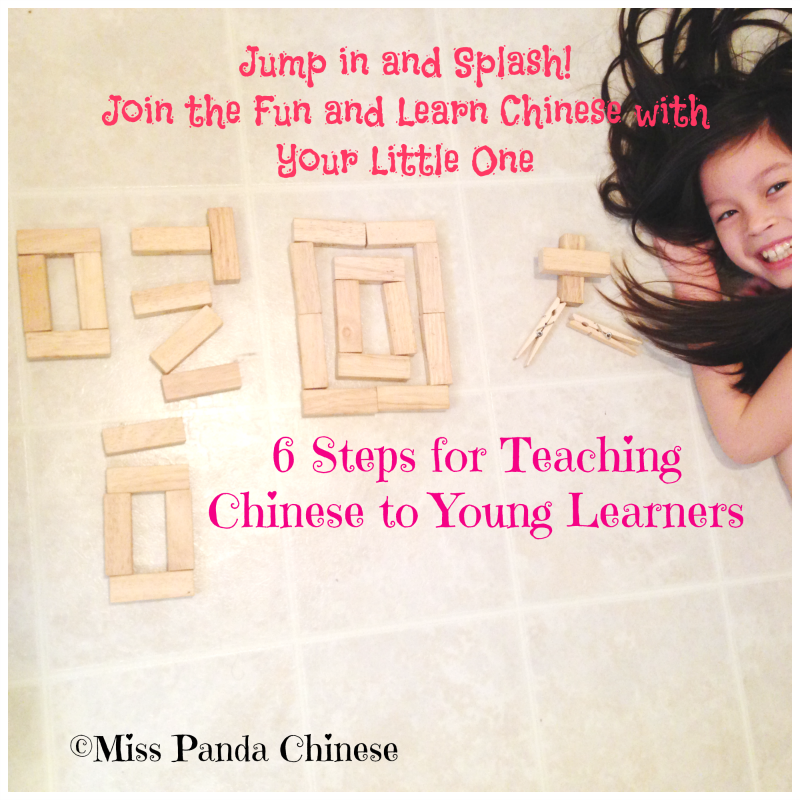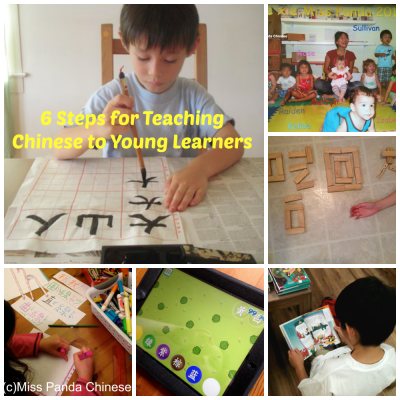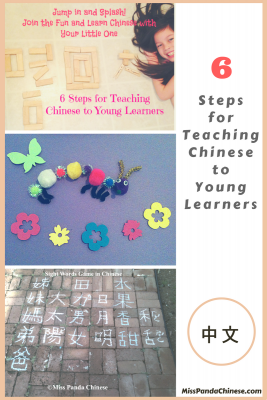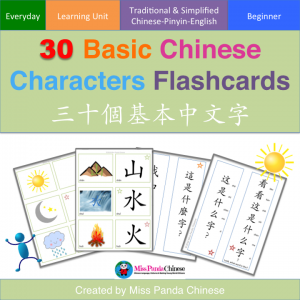Six steps for teaching Chinese to young learners! Being bilingual or multilingual has so many benefits. Research shows how easily young children can learn a different language when they are exposed to it, especially when they are immersed in it. We are in an era of raising young global citizens. Learning a language is learning a culture and it expands a child’s world. Speak Mandarin Chinese to your child if you are a native Chinese speaker. Learn Chinese with your child together and speak your newly learned words, phrases, and sentences to your child if you are a non-native Chinese speaker. Learning with your child together makes the learning experience fun. Consistency is always the key.

Here are six steps for teaching Chinese to young learners!
Learn with all five senses
Young children love hands-on activities and they have a lot of fun when they can use all their senses to encounter something new. This is always the first step for teaching Chinese to young learners. When you introduce the word “flower” to them, for example, you can show your child pictures of flowers and say the word “flower” in Chinese. You can also show her real flowers and let her smell and touch the flowers. After that, she can water the flowers, arrange the flowers, and sort the flowers and work on a craft project with a flower theme. Later in the day when you go out and take a walk together you can have a “Flower Hunt” for flowers in different sizes and colors. The more senses used the better. The repetition of the words and phrases along with a variety of activities spread out through the day or week makes the learning engaging and interactive for children.
Tip: Start slowly: one word, one phrase, and one sentence at a time and add them up.
Sing, play, and speak
Singing is a wonderful way to introduce a language to kids of all ages. Singing with movement is playful, joyful and exciting for young children. This is the second step of teaching Chinese to young learners. I always love to see the passion of my young students when they sing. My young students will often run up to me and sing me a song in Chinese at school and I’ll enthusiastically join them, singing with a big, happy smile. How can you resist? Singing is joy and joy banishes hesitation and stress and boosts the learning experience. Whenever we see the opportunity we should jump in and join our children to wiggle, dance, sing and speak the target words/phrases/sentences together. You can sing a song and play the “freeze” game. The resulting laughter you hear will inspire you and will make you want to learn and teach your child even more. As an experiment you can try joining your child in singing “London Bridge is Falling Down” in Chinese in the video to see how both you and your little one enjoy it!
Tip: Reading the lyrics of songs in pinyin or zhuyin helps with your pronunciation and will aid you in learning and remembering new words and phrases. 
Six Steps for Teaching Chinese to Young Learners
Read aloud or listen to familiar stories in the target language
Story time in Chinese with books that children are familiar with in their native language can have a magical effect. For non-Chinese speaking parents you can use reading videos online. Listen to “The Very Hungry Caterpillar” in Chinese and see how much your child naturally follows the story. Reading boosts early literacy and serves as a bonding time for you and your child on your bilingual journey. It naturally builds up vocabulary, sentence patterns and native language skills. Read, read, and read more! This is the third step for teaching Chinese to young learners. Reading and book activities work so well together. Book inspired activities give stories a different level of meaning and provide your children a new perspective of the book.
Tip: Try one or two pages to start and if your child wants more then you can increase the pages. The most important thing is to keep their interest.
“Draw” and have fun with Chinese characters
Do you have a Chinese brush, inkpad, and ink stone set? I find that this classic way of writing Chinese draws children in much more than a pen, pencil, crayon or marker. Writing with a Chinese brush is an exciting way for children to have fun with Chinese characters. Where do we start? There are over 500 Chinese characters in the pictogram group. Each one of them looks like a picture. Many are radicals that are similar to word roots in English. The radical gives meaning to the character. Words from the pictogram group are great for this “drawing” activity and sight word exercise. This is also a culture activity. Do you know Chinese children from China and Taiwan have calligraphy class? They do their calligraphy homework on special soft paper. Be creative and use crayons, markers, glitter and glue, play sand, and colored rice to “draw” characters. You can use watercolor on the Chinese brush as well. Traditional Chinese paintings can be done in black shades or in colors. Make sure you visit Chinese calligraphy editor on Chinese-tools.com where you can choose from various Chinese writing styles to copy from.
Tip: It is important to start with character that has only a few strokes such as “person – rén” 人, “big – dà ” 大, and “sky – tiān” 天. You can borrow a Chinese children’s book from the library and do a test run on this project. Don’t be surprised if your child decides to try more complicated words. Join them and be their cheerleaders!
Be consistent and keep the fun going
Playing is a part of learning for children. When learning is playful and joyful children will come back for more. Set up a language corner or language adventure area in the house and fill the place with various Chinese learning materials like books with characters or Chinese culture, board games that you can play in Chinese, music CDs, learning apps and audio programs for children on your mobile devices and resources on YouTube for screen time. I also have a Surprise Box in which I place teaching materials for our daily or weekly learning theme. The kids really enjoy it. They don’t know what is inside of the box and it really piques their interest. They can shake it, smell it and tap it, but they cannot open it. I use it to introduce new vocabulary. It is wonderful to see the laser-sharp eyes and focused minds when I open the box. The Surprise Box grabs their attention and gives them unexpected rewards from time to time.
Tip: It is very important that language learning be consistent. Set up a Chinese learning routine for yourself and your child, no matter if it is during your commute to and from school, an afternoon playtime, or a story time in the evening. 15 minutes a day goes a long way.
Live the language
Learning a language is a social activity. Children need to use a language to see the power that communicating in that language gives them. Having lunch at a Chinese restaurant, exploring a Chinese supermarket, visiting a Chinese school, or participating in a local Chinese culture event will lead you to a place where you can encounter people who speak Chinese and where your child can use the language naturally. A mother from one of my first grade classes caught me on campus one day and told me how her daughter was able to use polite words in Chinese to ask for a pair of chopsticks at a Chinese restaurant. The mother said that the staff was very impressed with her daughter. When she returned with her chopsticks the waitress even counted numbers in Chinese with the girl. After her mother told me this story the young girl eagerly asked me “What are we going to learn next?” with a beautiful smile. She was clearly proud of herself and enjoyed her newly developed language skills.
Tip: Join a Chinese language playgroup so you and your child can meet other children and parents who are also raising their children in more than one language. This will also provide you with opportunities to share your bilingual parenting tips and exchange ideas. Join Miss Panda’s Chinese for Everyone group and meet other parents who are also on this bilingual journey.
Learn a language and live the language! Grab every opportunity to speak, listen, read, and “draw”/write in Chinese. Remember that every little step counts! Welcome to the bilingual family community!
Love to read more Chinese teaching resources from Miss Panda? Sign Up for Email Updates:

*This article originally published on Chinese-tools at Chinese-tools*
